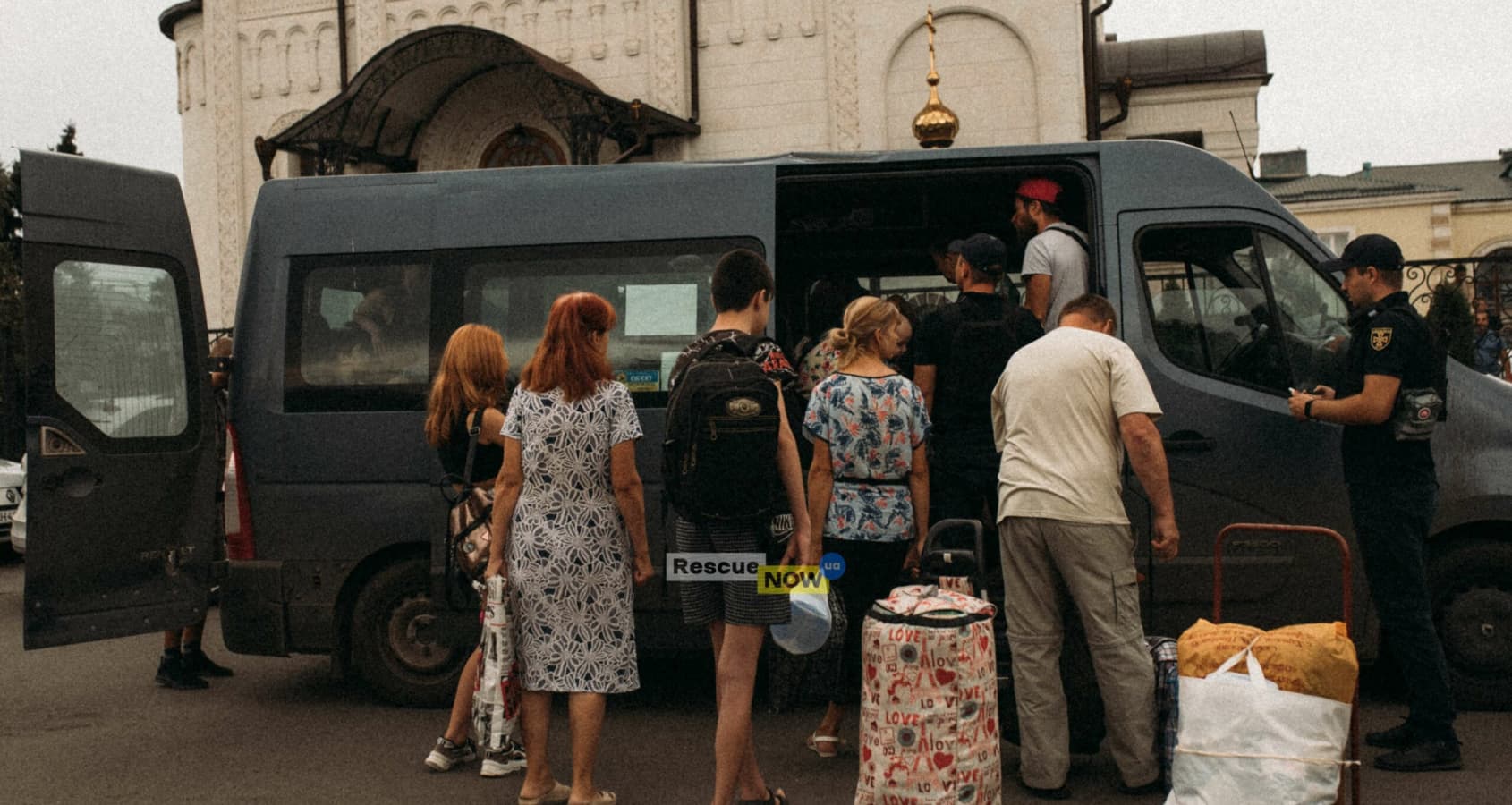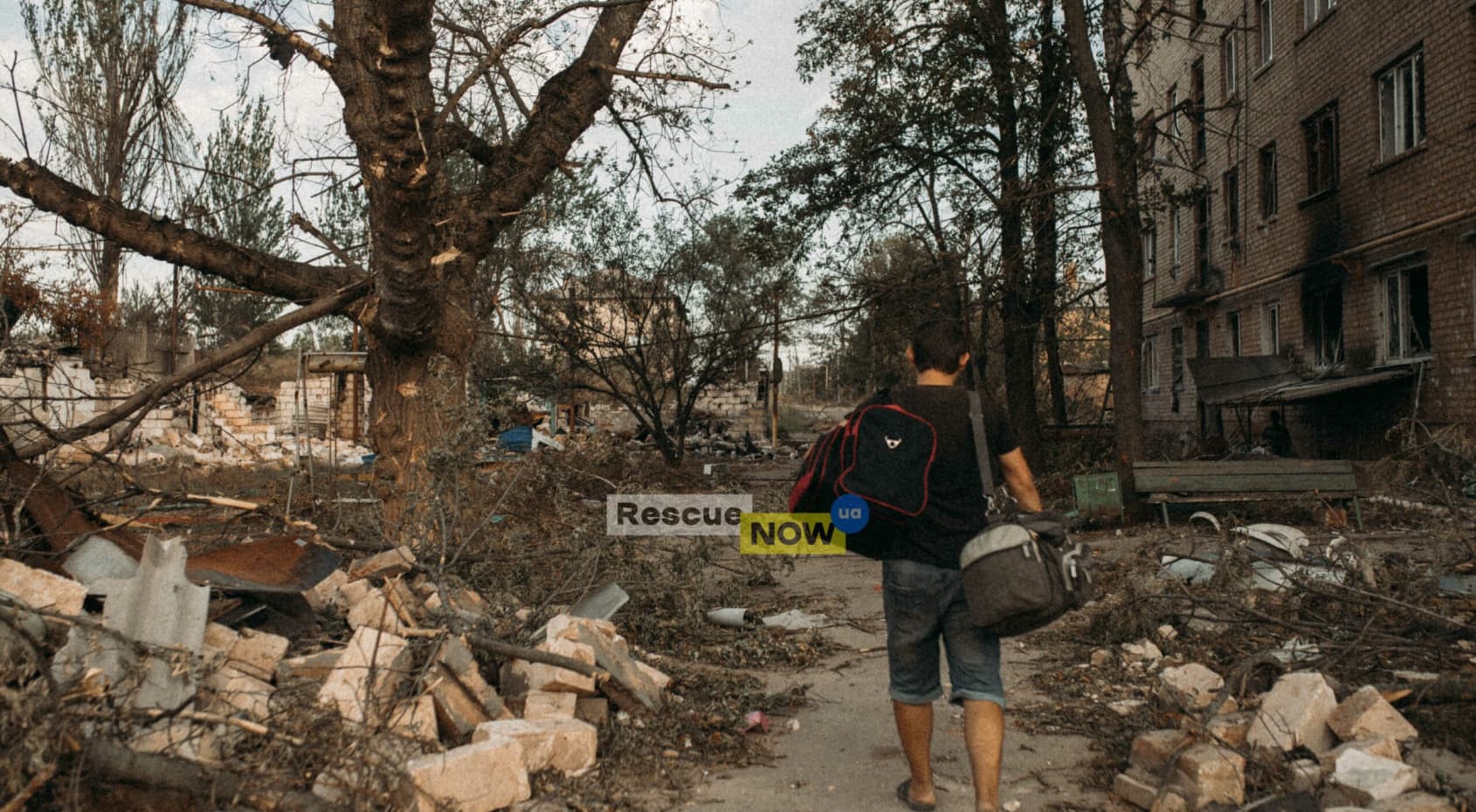We are evacuating everyone: how the newly formed Rescue NOW project takes people out of Kharkiv, Donetsk and Luhansk regions
On March 9, a post “Save Kharkiv! Humanitarian aid and evacuation” appeared on Instagram. At that moment, the building of the Regional State Administration, the Uspensky Cathedral, Karazin University and many residential buildings were already under fire in Kharkiv. On March 9, 14 people appeared trying to save Kharkiv residents from the war.
In a month, the fund's team will increase to about 200 people, and Kramatorsk, Popasna, Severodonetsk and other cities and villages of Donetsk and Luhansk regions will be among the destinations.
Volunteering is the second front
Rescue NOW started with a small group of people who just wanted to help Kharkiv and its residents survive the war. Prior to that, future drivers and coordinators were engaged in fashion, restaurant business, photography, teaching, acting. Since February 24, the mission of these people has been the same - to restore peace.
"The volunteer movement in Ukraine is the second front. Most understand that they can do something for the victory of their country. And people don't think about their job or personal security until we win. Because no one wants to be occupied by Russians, and understanding of some future can only be after we win," said Georgy Zeykov, a fashion designer and volunteer.
They started with the evacuation - they took their relatives to safe places. Then other people were taken at least to the railway station, from where people boarded evacuation trains. The team grew, as did the desire of the people to leave the city. Today, volunteers have helped more than 5,000 people to temporarily evacuate to Dnipro or Poltava, and the call center and social network receive up to 1,500 calls and 100 questionnaires - those who are still waiting for help.
Mykhailo Chernomorets, a restaurateur, took his relatives out on the first day and returned to Kharkiv himself. He says this is where he belongs. However, there was no understanding of what to do - chaos reigned. He started finding people through social networks to take out in his own car. On day 3 or 4, he was contacted by an NGO that had a bus but no drivers. Yes, Mykhailo started evacuating by bus. Now Chornomorets has switched to coordinating processes and rapid evacuation from Donetsk and Luhansk regions.
"At night, I raked up applications on social networks, sat on the floor in the toilet before going down to the shelter, because everything was exploding around me. During the day I traveled and answered calls. I wrote on Instagram that I needed help. One day a friend called and asked how to help: I passed some applications. That's how our team started to develop. We created the first registration form," says Mykhailo Chernomorets.
To collect data, they registered on Instagram and Facebook, where they receive messages and distribute the form that needs to be filled out for evacuation, and for logistics and direct removal, they started looking for volunteers.

What does the work of the fund look like?
Volunteers first receive an application where people provide the necessary details: location, contact phone number, person's condition (whether the person has a disability or illness), or has a person who takes in a safe place. The volunteer contacts to update the questions and informs about the time and place of the meeting. Georgy Zeykov calls it a typical evacuation.
When the war broke out, the designer did not think about work, although he did it for 10 years. He was looking for a way to apply himself and consequently found a foundation. Prior to that, he twice tried to get into the territorial defense. Now Zeykov wants to process all applications, save them, and then show the state where it is not working effectively enough.
If a person is disabled or seriously ill, they use an ambulance. They personally help people with disabilities to get out of the apartment - first they took them down on bedspreads, now they use special stretchers. The team has a list of volunteers with transport, and if a person can sit, they are asked for help.
Sometimes a team can take a person out of a specific address - it depends on the situation and condition. To do this, the fund cooperates with local taxis.
The evacuation from the region began with a blockade of Mariupol, and the fund's resources grew. Everyone was looking for a new direction. As soon as there was information that there would be an attack on Donetsk and Luhansk regions, Mykhailo went to check the safety of the road for evacuation. However, the first attempt was unsuccessful.
The team started looking for reasons. It turned out that the evacuation was discredited in the region. Men were not allowed into the state’s one, so the whole family could refuse. Animals were not allowed either. Therefore, at first the evacuation of the fund was not shared with what the state was doing. So the foundation began to take everyone out, and also looked for intermediaries who could motivate people. They went to the employees of village councils and heads of OTG, who knew people and could communicate with them.
As Georgy explains, the fund is trying to work out potential dangerous points in advance. To do this, they read the news, follow what is happening on the front line, and communicate with most of the cities.
Driver Dan says that safe evacuation also depends on the driver.
"I was waiting in line at one checkpoint, and it was shelled. The servicemen immediately took up positions, and I understood that I had people in my car. And I needed to do something. I asked everyone to lie on the floor, because it was dangerous to get out of the car. I stood like that for 10 minutes, but kept my foot on the gas soI could move out fast,” says Dan.
It happened that the fund was looking for other ways to leave, because on the way back they met missiles in the asphalt or Russian tanks. However, Dan motivates himself with one question: "If I can, why not?"
Nevertheless, there are stories in the fund when people refuse to evacuate.
"An acquaintance asked to evacuate her mother and grandmother, who remained in the house from which the attacks began. And this is 2-3 weeks of war. They were so scared that they gathered in 3 minutes. They were in a terrible state. I can't even explain. This is not hysteria - some horror in the eyes. They asked if we could meet the Russians or if we could get there. We even gave them a sedative,” says Mykhailo.
Georgy had a different story: a woman and her husband who had cancer refused to leave becauseRussians started bombing less. They thought it meant the end of the war. However, their area was occupied by the Russians, looted pharmacies and occupied hospitals to treat their soldiers. Therefore, the foundation had to carry medicines there several times: they were looking for painkillers, and another person was taking them from Kharkiv to Balaklia. There, another volunteer picked it up in a safe place and returned through Russian checkpoints. An injection was given in Balaklia, and only after that did the woman agree to the evacuation.
"It's a story when you have to do everything on time. And if you don't do that, you create problems for yourself and for others," Zeikov emphasizes.
In addition, Chernomorets believes that due to the fact that Russian troops have left some cities in the region, people have the impression that everything is fine.
"Unfortunately, Kharkiv is leaving the information field, but the shelling is not over. It seems that the situation has improved. And people who left 2 months ago do not see information about what is happening in the city, there is a false sense of security. Sooner or later, people will start coming back, and it's too early," says the restaurateur.
If necessary, volunteers also seek temporary shelter for people in evacuation cities if no one meets them. On the way back to Kharkiv, they buy humanitarian aid: food, medicine, fuel, baby food, clothes. Humanitarian aid is the second direction of the fund.
The third is determined to feed people. To do this, in the shelter of one of the restaurants in the city they have opened a kitchen, which prepares about 10 thousand servings daily.

How much does an evacuation cost?
The fund managed to attract $ 300,000 from American and European foundations and donors to purchase the necessary items. However, due to bureaucratic processes, which are delayed through large funds, volunteers are looking for money through social networks - urging people to donate.
According to the fund's estimates, the usual evacuation costs 550 hryvnias per person. For a difficult evacuation, the car from Kharkiv to the Dnieper will cost around 1500-2000 hryvnias for three.
However, evacuation is free for people - all bills are paid by the fund. That's why Rescue NOW has created a donation form: you can pay for fuel or humanitarian aid with a card, PayPal, Google / Apple Pay, Revolut or a SWIFT bank transfer. All valid accounts can be found on the fund's Instagram page.
It is difficult for the fund to cooperate with government agencies too. There was a case when they were refused a bus that was parked in the parking lot for fear that something would happen to it.
At the same time, it is easy to work with small towns and villages where people know each other and cooperate better. So in one village the residents themselves agreed on a school bus, and asked the fund only for fuel.
"You refuel them for 10 thousand hryvnias, and the evacuation of one costs less than 300 hryvnias if 30 people go. It's cheap," explains Zeikov.
However, the foundation does not say that each such evacuation costs drivers their lives, because it is unknown when the Russians will once again fire on the city, highway or evacuation bus. Dan shares his rules of evacuation: think quickly in case of an emergency, do not take your loved ones on the road, because it will distract from thoughts about their own safety, and have a few ways to travel. Also, Dan does not buckle up to jump out of the car during the shelling - the probability is higher than the accident.
"It's scary, but nowhere without it. Fear drives us, ”explains Dan.


